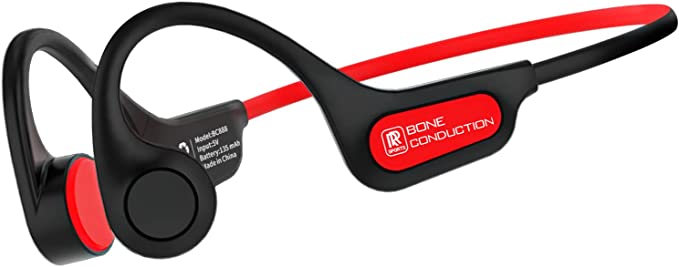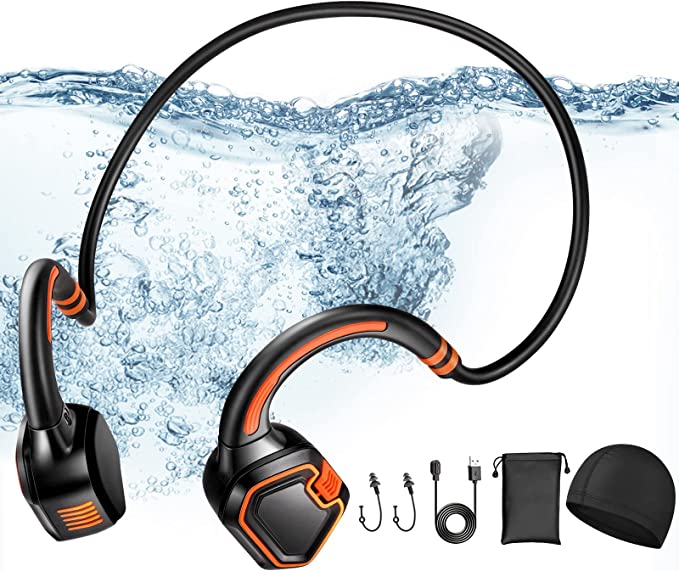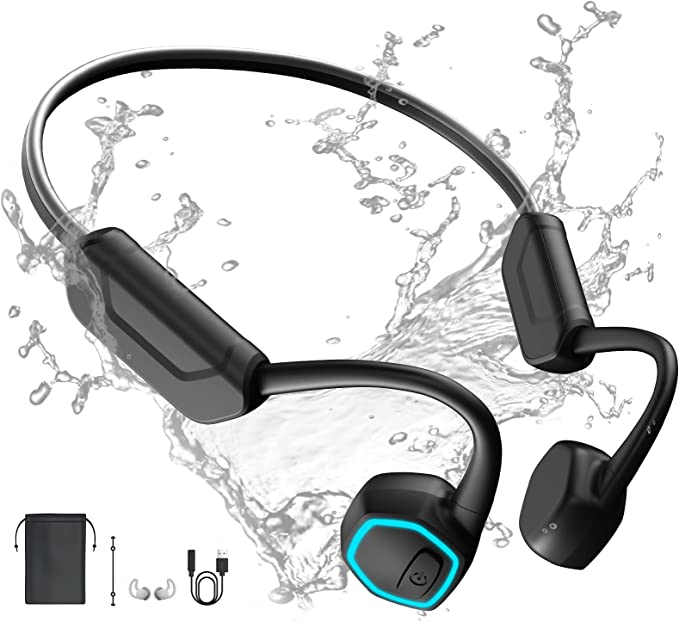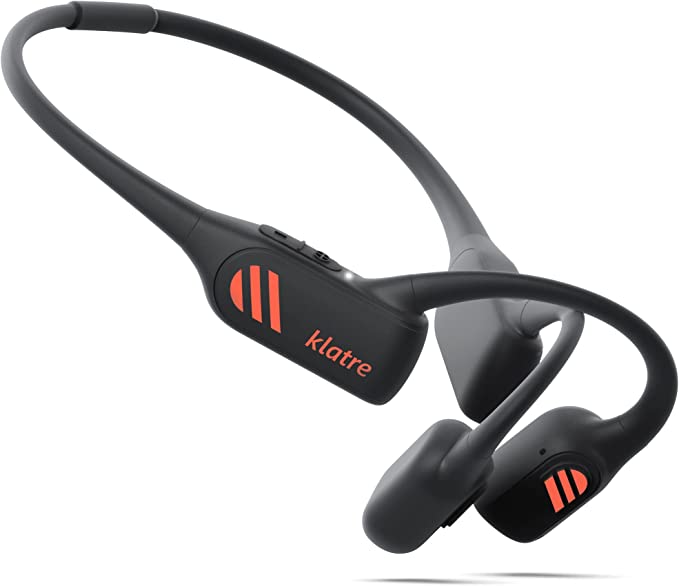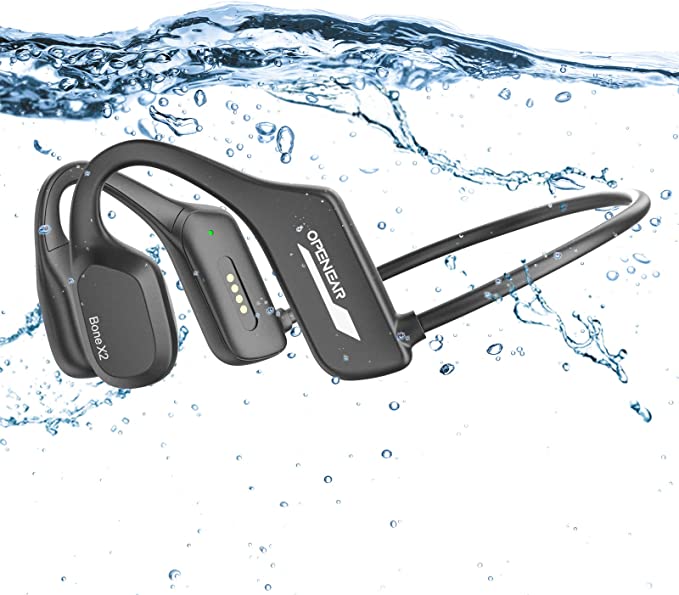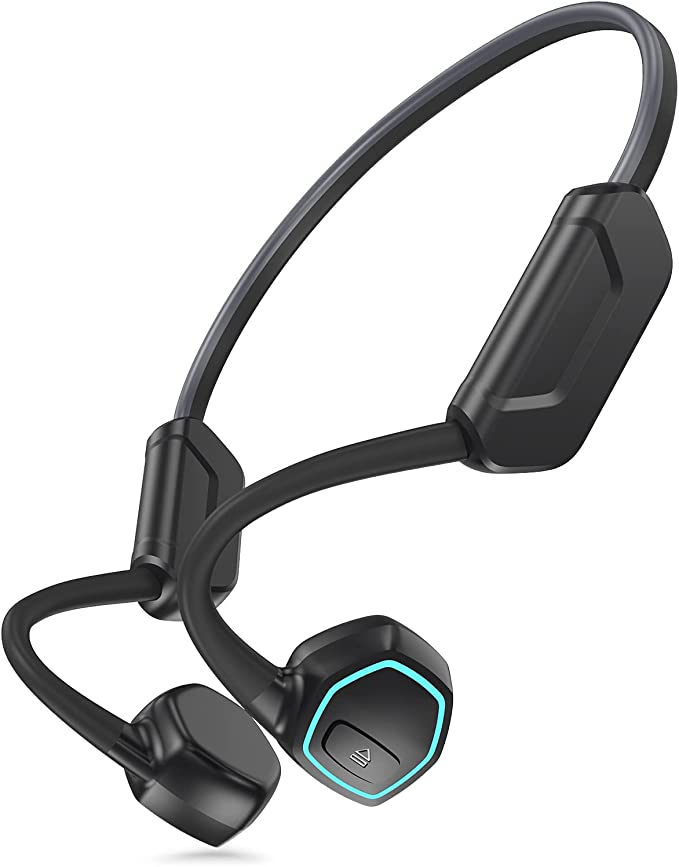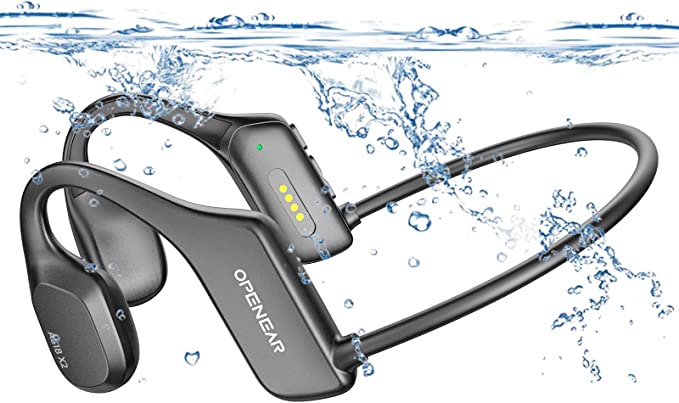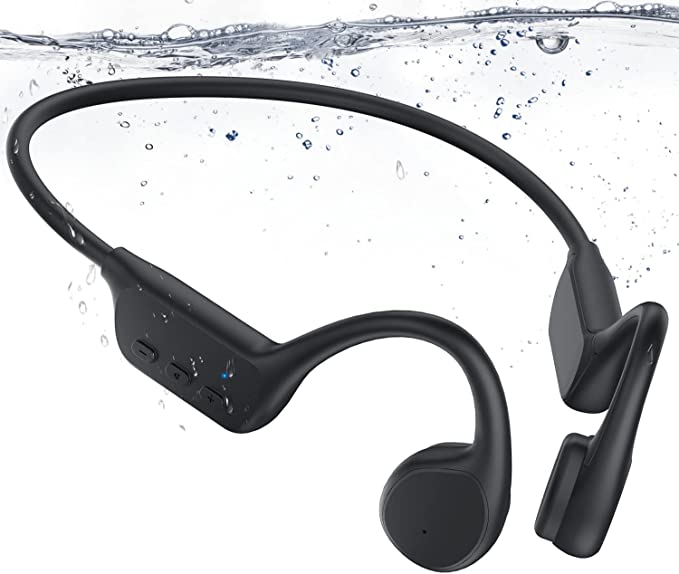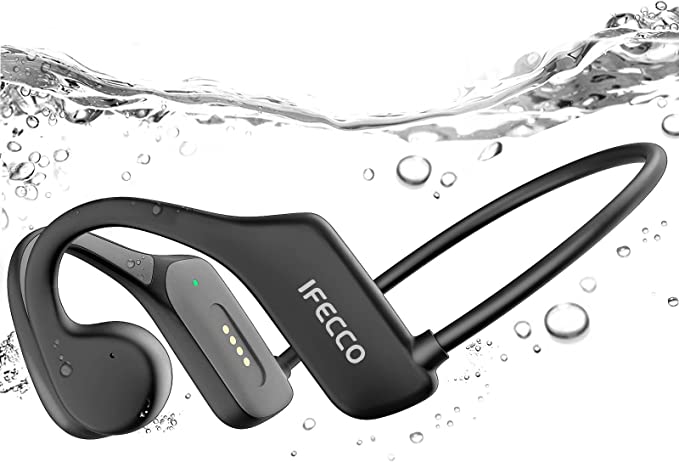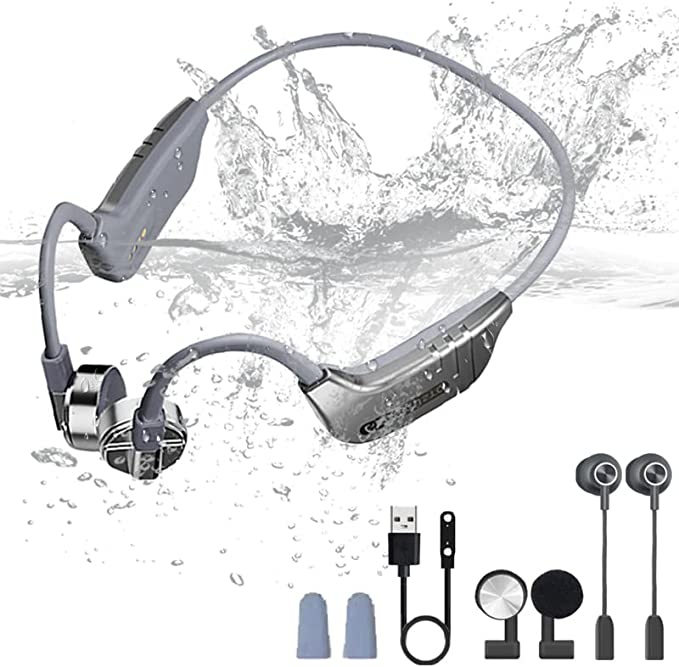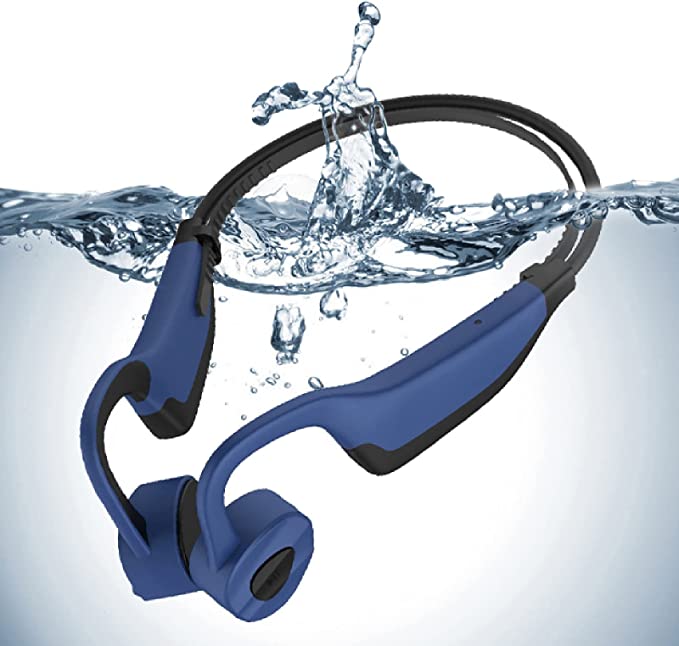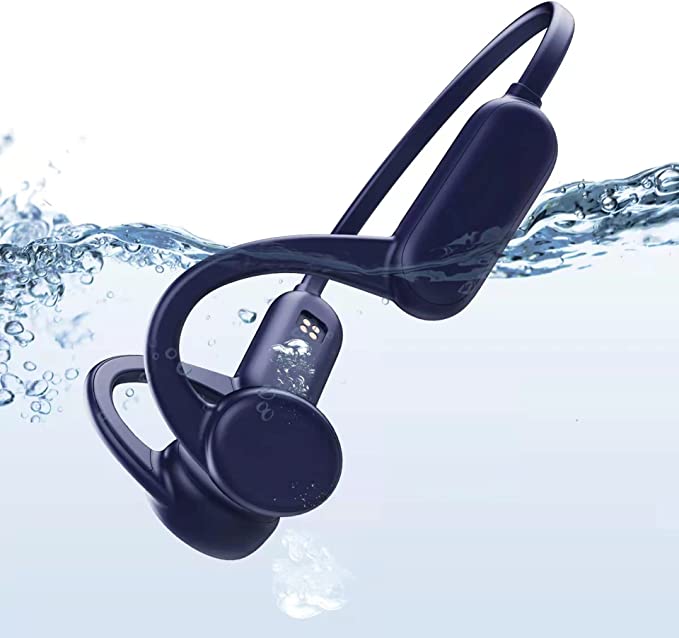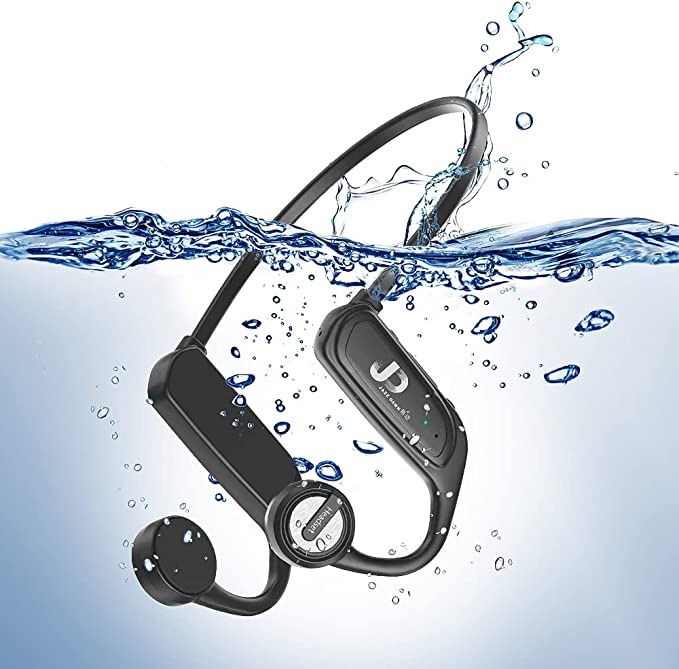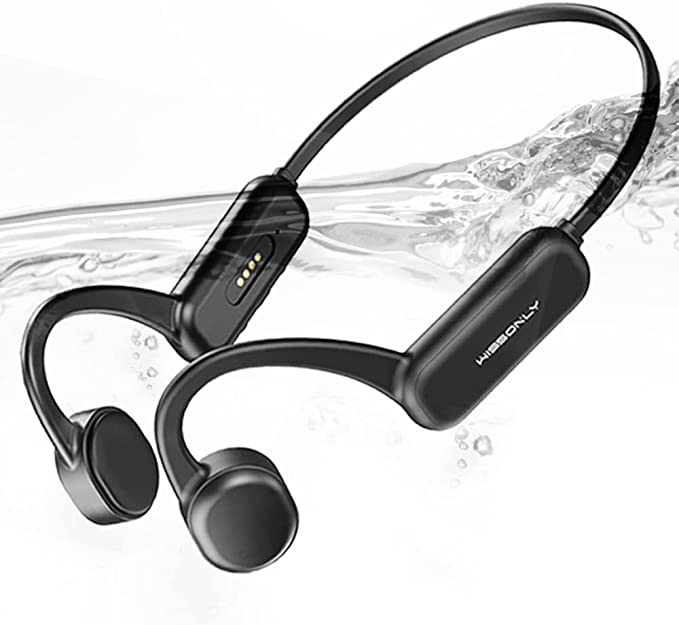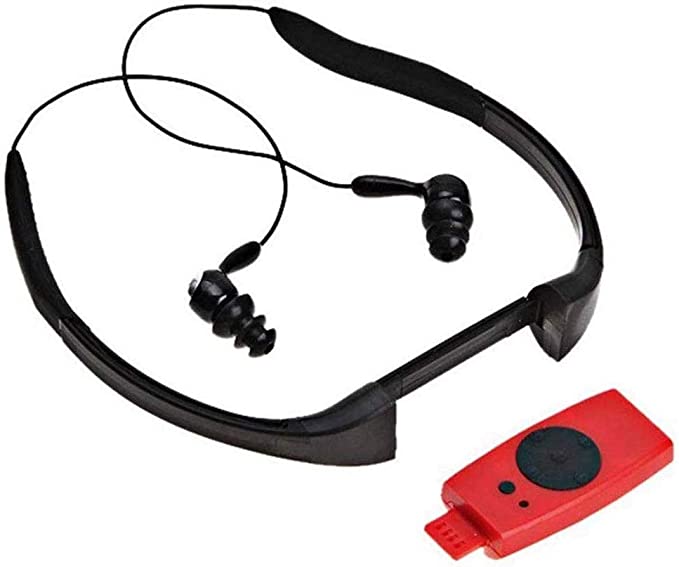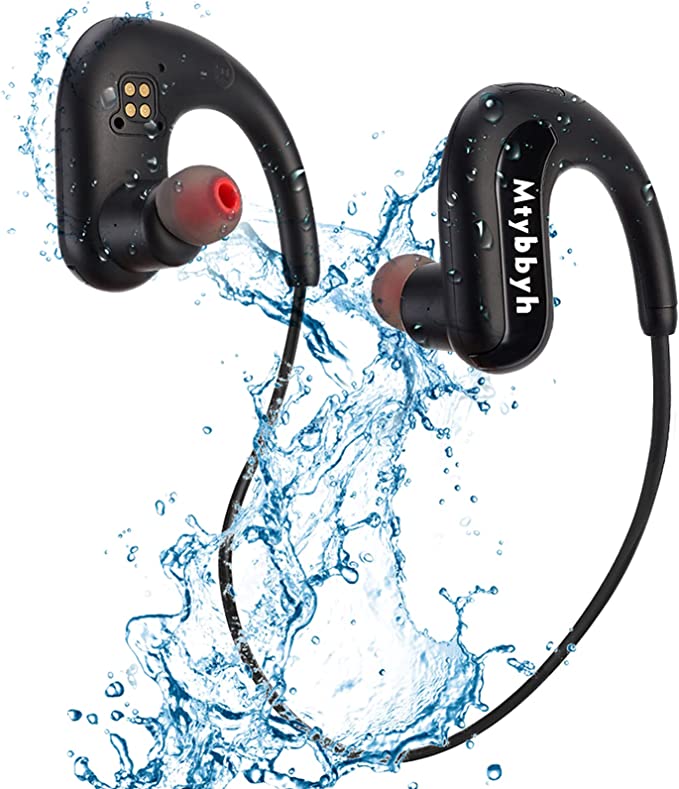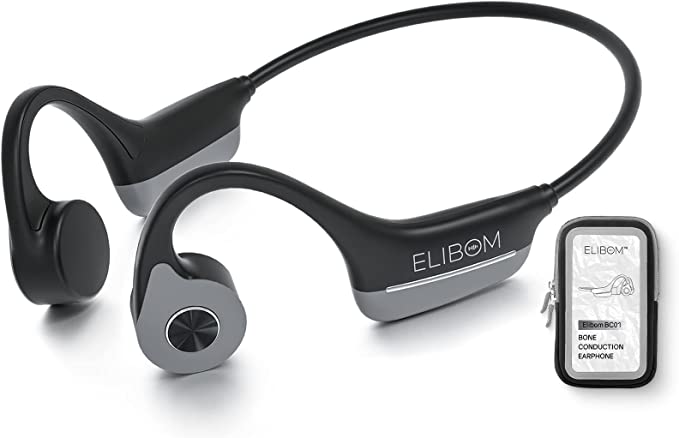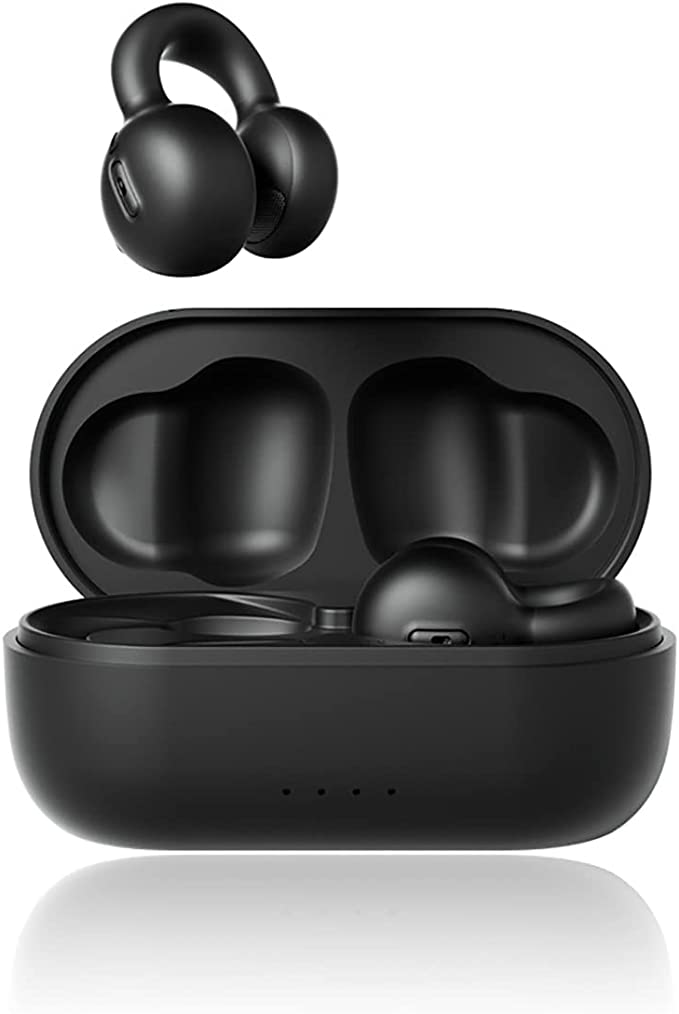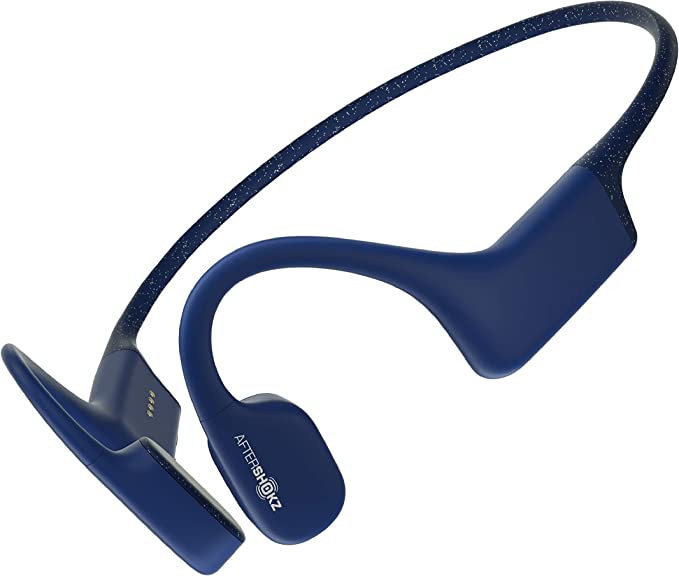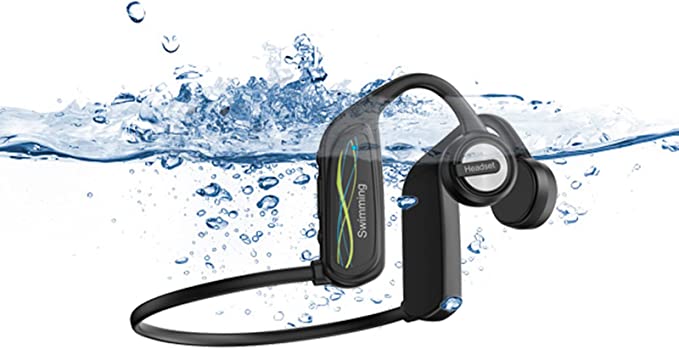IKXO Mp3 Player Bone Conduction Headphones: Unlocking Underwater Audio and Open-Ear Freedom
Update on May 15, 2025, 8:26 a.m.
The world pulses with rhythm, a soundtrack to our lives that many of us wish to carry into every sphere of activity. Yet, the desire for a personal audio soundscape often collides with the practicalities of an active existence, particularly when water enters the equation, or when unwavering awareness of our surroundings is paramount. Traditional headphones, with their ear-covering or ear-plugging designs, can feel limiting, isolating us or proving entirely unsuitable for aquatic adventures. But what if sound could take a different path, a more ancient, direct route to our perception? This is the promise of bone conduction technology, a fascinating principle elegantly embodied in modern devices like the IKXO Mp3 Player Bone Conduction Headphones. These aren’t just another pair of earphones; they represent a thoughtful convergence of physics, material science, and user-centric design, aimed at liberating your listening experience.

A Pathway Carved in Bone: The Enduring Science of Vibrational Hearing
Long before sophisticated electronics, the fundamental principle of bone conduction was anecdotally understood, perhaps most famously associated with the composer Ludwig van Beethoven. As his hearing via the conventional air-conduction pathway declined, Beethoven reportedly discovered he could still perceive the notes of his piano by clenching a rod in his teeth and touching the other end to the instrument. The vibrations travelled through the rod, his jawbone, and directly to his inner ear, allowing the music to resonate within him.
This “unheard” pathway is a marvel of our physiology. Typically, sound waves travel through the air, funnelled by our outer ear to vibrate the eardrum. These vibrations are then mechanically amplified by the tiny ossicles of the middle ear before reaching the cochlea, the spiral-shaped, fluid-filled organ of the inner ear. Here, hair cells convert these mechanical vibrations into electrical signals that the brain interprets as sound. Bone conduction ingeniously bypasses the outer and middle ear. Instead of sending sound waves through the air in your ear canal, devices like the IKXO headphones rest gently on the cheekbones, delivering minute vibrations. These vibrations travel through the cranial bones directly to the cochlea. Imagine the deep thrum of a bass guitar that you feel in your chest at a concert – bone conduction operates on a similar principle of transmitted vibration, only far more precise and localized.
This alternative auditory route offers two profound advantages. Firstly, it leaves the ear canal entirely open. This means you can enjoy your music, podcast, or audiobook while remaining fully attuned to the ambient sounds of your environment – the approaching cyclist on a shared path, the friendly greeting of a fellow hiker, or important announcements in a public space. Secondly, because it doesn’t rely on air transmission within the ear canal, bone conduction can be exceptionally effective where air conduction struggles, most notably when submerged in water.

IKXO: Engineering Sound for the Aquatic Realm and Beyond
The IKXO Mp3 Player Bone Conduction Headphones are a testament to how this established scientific principle can be harnessed and augmented by modern engineering to create a truly versatile audio tool. They are designed not merely as a conduit for sound, but as an enabler of richer, safer, and more immersive experiences, particularly for those who push their boundaries on land and in water.
Immersion Proof: The Science of IPX8 Waterproofing
For anyone who has longed for a personal soundtrack to their swim or has hesitated to take their audio gear near water, the term “IPX8 waterproof” on the IKXO headphones is a beacon of assurance. But what does this alphanumeric code truly signify? “IP” stands for Ingress Protection, an international standard (IEC 60529) that classifies the degree of protection an enclosure provides against the intrusion of foreign objects (like dust, indicated by the first digit, or ‘X’ if dust protection isn’t specifically rated) and, crucially here, moisture (indicated by the second digit).
The ‘8’ in IPX8 is one of the highest ratings for water protection. It denotes that the device is suitable for continuous immersion in water under conditions specified by the manufacturer, which typically exceed 1 meter of depth. For the IKXO headphones, this translates to a capability of being submerged up to an impressive 3 meters (approximately 12 feet). Achieving this level of waterproofing is a significant engineering feat, involving meticulous sealing of all seams, buttons, and charging ports, often using specialized gaskets and hydrophobic coatings to ensure that water cannot breach the sensitive electronic components within. This robust protection transforms the headphones into reliable companions for swimmers, surfers, and even recreational divers, allowing the rhythm of music to accompany the rhythm of the waves. Imagine gliding through the water, lap after lap, with your favorite motivating tunes playing clearly, or exploring a vibrant reef with a serene soundscape enhancing the visual beauty – this is the freedom IPX8 technology unlocks.

The Subaquatic DJ: Embracing the Power of Built-in MP3
While Bluetooth technology has revolutionized wireless audio on land, it encounters a formidable barrier underwater: water itself. Radio waves, including the 2.4 GHz frequency band used by Bluetooth, are significantly absorbed and scattered by water. This absorption drastically reduces Bluetooth’s effective range to mere inches, if it works at all, when submerged. This is where the IKXO headphones’ integrated 8GB MP3 player becomes not just a feature, but a fundamental necessity for aquatic audio.
By allowing users to load audio files directly onto the device—supporting popular formats like MP3, WMA, and FLAC—IKXO provides a self-contained audio system. This 8GB of storage can hold a substantial library, potentially thousands of songs or many hours of audiobooks, effectively turning the headphones into a personal, waterproof jukebox. The science is straightforward: the music is stored locally, and bone conduction delivers it directly, completely bypassing the challenges of underwater wireless transmission. This ensures a consistent, high-quality listening experience, whether you’re performing a flip turn in the pool or observing marine life. It’s a thoughtful nod to the reliability of dedicated onboard storage when wireless signals meet their match, a kind of MP3 renaissance for a very specific, and very enjoyable, purpose.

Ears Wide Open: The Safety and Serenity of Open-Ear Design
One of the most compelling benefits of bone conduction technology, fully realized in the IKXO headphones, is the open-ear design. Traditional headphones, by their very nature, create a barrier between the listener and their environment. Over-ear headphones cup the entire ear, while earbuds plug the ear canal. While this can be desirable for immersive listening in a quiet setting, it can pose significant safety risks in dynamic environments by masking crucial auditory cues.
The IKXO headphones, resting on the cheekbones, leave your ear canals completely unobstructed. This means you retain full situational awareness. Cyclists can hear approaching traffic or the chime of another bike’s bell. Runners can remain aware of pedestrians, pets, or vehicles on trails and city streets. Even in a gym, you can hear equipment in use or a trainer’s instructions. This continuous auditory connection to your surroundings significantly enhances safety. Beyond sports, this open-ear aspect offers a unique comfort. Many individuals find prolonged earbud use uncomfortable or dislike the sensation of a blocked ear canal. Bone conduction offers a pressure-free alternative, allowing for extended listening without that “plugged up” feeling, making them suitable even for a day at the office if you wish to enjoy music while remaining accessible to colleagues.
The Unseen Architecture: Crafting Comfort, Durability, and Control
The performance of any wearable technology is as much about its physical construction and ergonomics as its electronic capabilities. The IKXO headphones showcase a thoughtful approach to these elements.
The choice of titanium alloy for the frame is pivotal. Titanium is renowned in aerospace and medical fields for its exceptional strength-to-weight ratio, flexibility, and corrosion resistance. This makes the headphones remarkably lightweight – a mere 18 grams (0.63 ounces) as per the product information – minimizing any sense of burden during vigorous activity or extended wear. This lightness, coupled with an ergonomic design that gently but securely hugs the contours of the head, ensures they stay in place without undue pressure. Titanium’s resilience also means the headphones can withstand the rigors of daily use, including the flexing required to put them on and take them off repeatedly, and its resistance to corrosion is particularly beneficial for a device designed to be exposed to sweat and water.
Interaction with the device, especially when hands are wet or occupied, is facilitated by intuitive touch controls. These sensors allow users to manage music playback (play, pause, skip), adjust volume, and switch between Bluetooth and the internal MP3 player with simple taps and gestures, eliminating the need to reach for a phone or grapple with small, physical buttons.
Powering these experiences is a 350mA battery, which the product details state offers between 8 to 12 hours of playback. This generous battery life is crucial for users who engage in long training sessions, day-long excursions, or simply don’t want the inconvenience of frequent recharging. It’s enough to last through a marathon, several lengthy swim sessions, or a full day of mixed activities.
Furthermore, the inclusion of CVC 8.0 Noise Canceling Technology is noted. In the context of open-ear headphones, this technology typically applies to the microphone system. Clear Voice Capture (CVC) is designed to suppress ambient background noise picked up by the microphone during phone calls, ensuring that your voice is transmitted more clearly to the person on the other end, even if you’re in a moderately noisy environment. While it doesn’t cancel noise for the listener (as the ears are open), it enhances the usability for communication.

Harmonizing Technology with Human Experience
The IKXO Mp3 Player Bone Conduction Headphones are more than just a collection of impressive specifications. They represent a harmonious blend of scientific understanding and thoughtful engineering, aimed at seamlessly integrating audio into the tapestry of an active life. By leveraging the unique pathway of bone conduction, embracing robust IPX8 waterproofing, providing the underwater reliability of an onboard MP3 player, and ensuring comfort and control through intelligent design and material choices, these headphones address genuine user needs and unlock new listening possibilities.
The journey of personal audio is one of continuous evolution. We’ve moved from stationary record players to portable cassette players, from CDs to the digital revolution of MP3s and streaming. Technologies like bone conduction, as showcased by IKXO, point towards a future where audio is not just about high fidelity in a quiet room, but about adaptable, aware, and resilient solutions that enhance our experiences wherever life takes us. It’s a future where the soundtrack of our lives plays on, uninterrupted by the elements or the demands of our adventures, allowing us to hear more of our world, both within and without.

